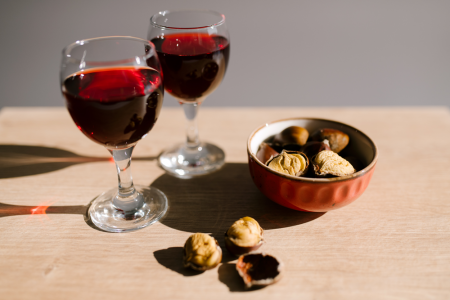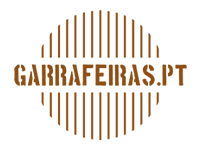
Saint Martin with Chestnuts and Wine!
Saint Martin’s Days is already approaching, being a festival synonymous with eating chestnuts with wine to accompany. In Portugal, proof that Saint Martin and wine are directly related are popular sayings, such as:
Saint Martin's Day, fire, chestnuts and wine.
On Saint Martin's day, test and knock down your wine.
On St. Martin's Day, chestnuts are eaten and wine is drunk.
On St. Martin's Day, go to the cellar and taste the wine.
For St. Martin's Day roasted chestnuts, bread and wine.
At St. Martin's Day, all the must is good wine.
Harvest in October that St. Martin will tell you.
Who was St. Martin?
It is said that St. Martin was born in the 4th century, in the old city of Savaria, where Hungary is currently located. He was the son of a Roman commander and of a pagan family, he grew up in the Pavia region of Italy, where he would later become a military man.
After leaving the army, he was baptized and became a disciple of Saint Hilary of Poitiers. After being persecuted in Milan, they went to France, where he founded the Monastery of Marmoutier, the oldest in Europe. He also founded several rural churches, in which he served both the poor and the rich. He died on 8 November 397, in Candes, and was buried on 11 November in Tours. Thus, this last date is the day of his celebration. There is a popular belief that on the eve and on the day of the festivities, the weather improves, being known as St. Martin summer.
St. Martin’s day
This day is celebrated throughout Europe, although celebrations vary from region to region. In Portugal, tradition says that you should make a great “magusto” and drink water-foot or jeropiga. Likewise, the new wine is tasted, even though it is not finished.
St. Martin’s day and wine
According to tradition, at the end of the summer the wine stocks were already finished. Thus, a new harvest was desired and before the wine was ready it was transformed into a consumable product with some quality.
In Portugal, we have some types of wines ideal for this celebration.
Água-pé: traditionally Portuguese, with low alcohol content, it occurs by adding water to grape marc and brandy. It is made in a homemade way, for consumption in magusto and other autumn and winter festivities, not being available on shopping malls. This drink also goes well with fevers or pork.
Jeropiga: also traditional in Portugal, it is prepared by adding brandy to the must to stop fermentation. So it is a more alcoholic drink than wine. This drink pairs with fatty meats, fatty cheeses and nuts, including, of course, chestnuts. This is for sale on shopping malls.
Photo by Julia Volk from Pexels
